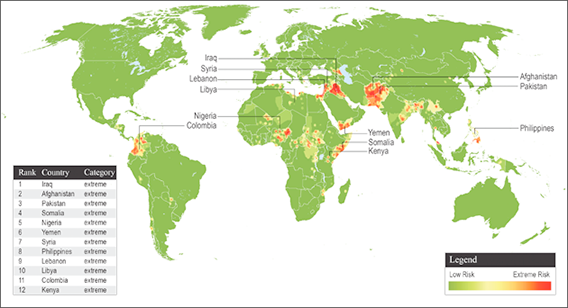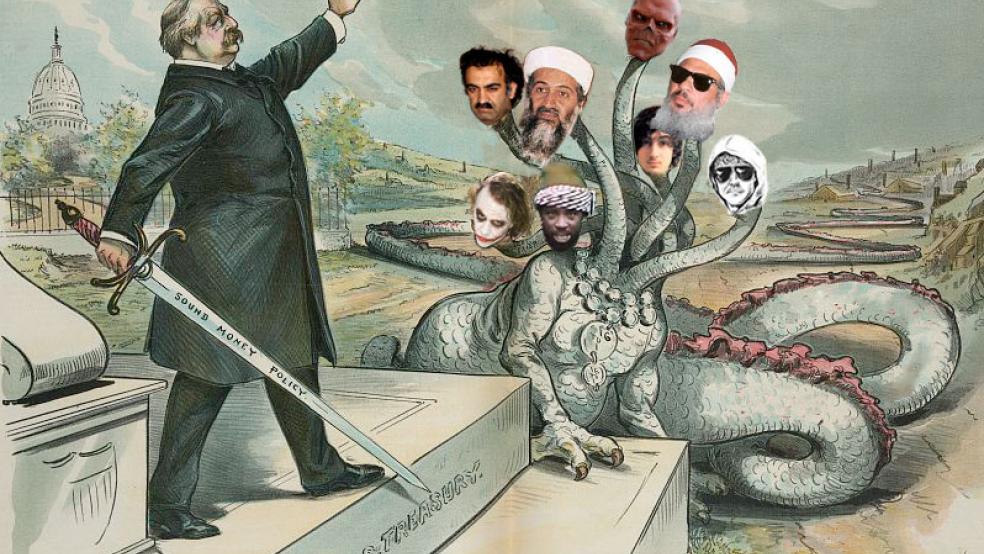The death of Osama bin Laden and the dismantling of the al Qaeda leadership responsible for planning and executing the 9/11 attacks has transformed global terrorism into a multi-headed monster with dangerous branches springing up in hot spots around the globe.
Bin Laden’s death, and the success of the American war on terror in Afghanistan and Pakistan, has decentralized al Qaeda. When bin Laden was in charge, al Qaeda had a clear command structure, a centralized location in Afghanistan, and a network of small, clandestine cells around the world.
Related: Four Al Qaeda Groups Gunning for the United States
As the leadership of this version of al Qaeda was killed or captured in the last decade, al Qaeda and other Islamic extremists groups have adjusted their tactics. Now, Islamic extremism is more localized. But Islamic terror groups, whether or not they are approved by chief Ayman al-Zawahiri and formally affiliated with al Qaeda, pose a threat to Western targets. They also have pledged to hit the United States and Europe on their own shores.
This map, created by Maplecroft, a global risk analysis firm, shows how decentralized extremism has become.

As the graphic illustrates, extremists continue to operate in traditional locations like Iraq, Afghanistan and Pakistan, as well as across the Middle East. But they’re also popping up in places that, until recently, were once believed to be stable.
For instance, in just three years Boko Haram has transformed itself from a small group of marauders to an organization capable of kidnapping and murder on a large scale. The terror group from Kenya has turned a popular tourist destination in Africa, into a menace in Somalia seizing an upscale mall in Nairobi, killing 68 people in the process. Boko Haram was also responsible for the kidnapping of 200 girls in Nigeria who have yet to be found. There have also been dramatic increases in the number of attacks in Libya and Egypt, according to Jordan Perry, a principal political risk analyst at Maplecroft.
Related: Why the Long Arm of ISIS Has Eric Holder Spooked
“Libya, Kenya and Egypt are among a handful of countries to witness a significant increase in risk in the MTSD and investor confidence in key sectors, including tourism and oil and gas, has been hurt,” Perry said. “When faced with rising security costs and decreasing safety for their personnel, companies can, and do, reconsider their country-level commitments.”
Maplecroft says the globalization of terrorism has caused a dramatic spike in the number of terrorism related fatalities around the world. The company’s Terrorism and Security Dashboard counted 18,668 terrorism-related deaths in the last year, compared with an average of 14,433 deaths annually during the last five years. It’s an increase of 30 percent.
Terrorism is also popping up in unlikely places. So far this year in China, some 76 people have been killed by acts of terror. In the first six months of last year, just 16 were killed.
American Presence
One of the things that most of the 12 worst countries - in order from first to last, Iraq, Afghanistan, Pakistan, Somalia, Nigeria, Yemen, Syria, the Philippines, Lebanon, Libya, Colombia and Kenya - have in common is an American presence.
Related: ISIS May Be More Dangerous Than Al Qaeda Ever Was
For instance, American drones and advisers are in Nigeria and Kenya assisting in the fights against Boko Haram and al Shabaab, respectively. Americans are also in Iraq, Afghanistan, Syria, the Philippines, Yemen and Pakistan.
The dramatic decentralization of terrorism show by the Mapleton graphic, along with the presence of Americans and Europeans in groups like al Shabaab and the International State of Syria and Iraq, shows just how vulnerable the Untied States and Europe have become in a short time. It lends credence to Republican charges that the Obama administration, which declared the war on terror over a year ago - is not taking the new rise of extremism seriously.
“The seeds of 9/11s are being planted all over Iraq and Syria," Sen. Lindsey Graham (R-SC) said last month. "They want an Islamic caliphate that runs through Syria and Iraq...and they plan to drive us out of the Mideast by attacking us here at home.”
Top Reads from The Fiscal Times:





